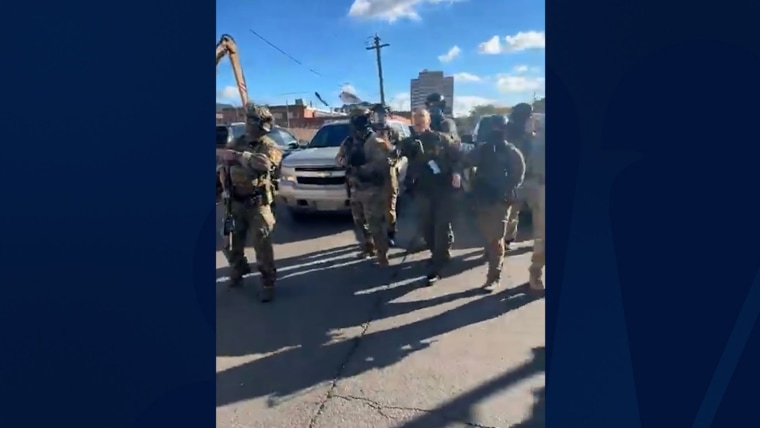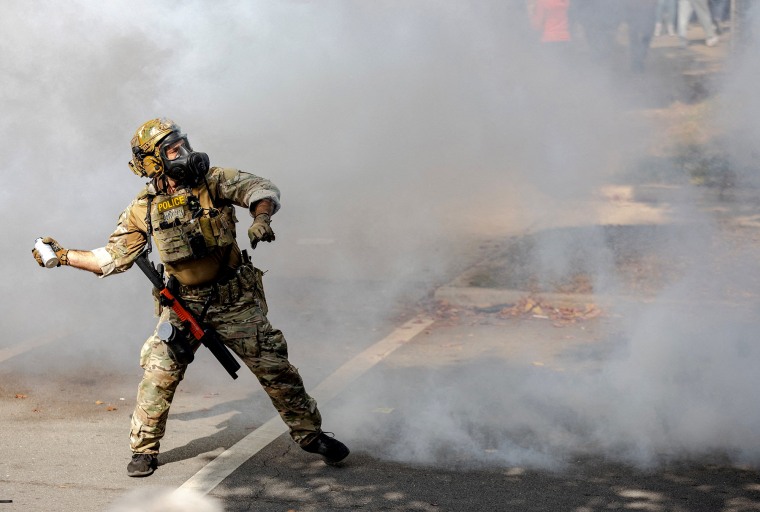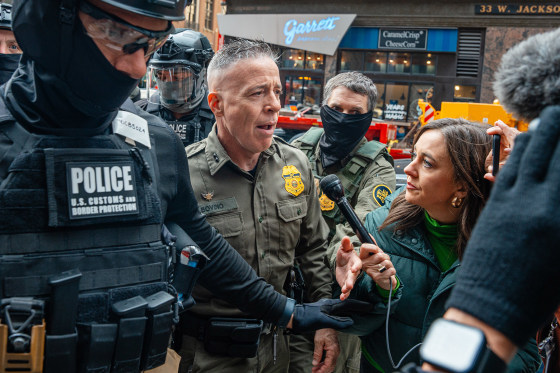CHICAGO — U.S. Border Patrol chief Gregory Bovino, who appeared in federal court on Tuesday sporting his trademark dark green uniform and crew cut, seems likely to become a regular presence there.
U.S. District Judge Sara Ellis ordered Bovino, the Border Patrol sector chief overseeing the agency’s operations in Chicago and previously in Los Angeles, to appear in federal court each weekday at 6 p.m. to report on daily immigration operations. She also ordered that he turn over all agents’ use of force reports from Sept. 2 through Oct. 25, as well as the bodycam footage corresponding to those reports, by Friday.
The exchange highlights the mounting tensions between immigration officials and residents across the Chicago area, particularly after Bovino and immigration agents were captured on video and in photos deploying chemical agents in numerous residential neighborhoods. Attorneys argued the actions were in violation of Ellis’ temporary restraining order issued on Oct. 6 which said immigration authorities must curb the use of tear gas and chemical agents when they are not under threat, especially where the general public could be affected.
In that order Ellis also instructed immigration agents to wear — and turn on — their body cameras.
That led to one of Tuesday’s most revealing questions: Did Bovino, as the head of the operation in Chicago, have a body camera on the day he was recorded?
“I do not, ma’am, no,” he replied. Nor did he have training, he said. On body cameras, Bovino said he did not know how many of his 201 agents in Chicago did not have them but that he believed 99% did have them. Bovino committed to getting his agents equipped.

After Ellis noted he is leading the operation in Chicago and not wearing a camera, Bovino agreed he would get one — and the training for it — by Friday.
That instance of apparent noncompliance, added to what the judge characterized as an excessive use of tear gas, often deployed without warning and in instances, she believed, where it was not warranted. From the bench, the judge laid out evidence she’s seen of immigration operations since then, saying it was “difficult for me to see the force being used is necessary.”
Ellis told Bovino that he must have not understood her temporary restraining order she previously entered, and reread it to him as he looked on, occasionally nodding and often saying: “Yes, ma’am.”
Bovino and Customs and Border Protection officials previously defended the recent use of tear gas and other tactics, arguing the agents were under threat and thus not in violation of the judge’s order. In some cases, witnesses have contested those claims and also said they were given no warning before tear gas was used.
Ellis on Tuesday pointed to recent incidents across Chicago that she believed may have been in violation of her order that tear gas not be used on protesters who don’t present a threat and that ample warning be given when it is deployed.

“Kids dressed in Halloween costumes walking to a parade don’t pose an immediate threat” to a law enforcement officer, she said, referencing a weekend incident in Old Irving Park neighborhood, a safer part of Chicago. “Those kids were tear gassed on their way to celebrate Halloween in their local school parking lot,” she later added, noting the fear the kids must have felt.
Christopher Lynch, a government attorney, told Ellis Tuesday that tear gas was being used to restore safety “in highly volatile situations.”
When Bovino left the courtroom, Ellis warned the government that on Halloween she didn’t want to see disturbances from immigration officials around children.
Ellis very carefully outlined statement after statement from witnesses describing their interactions with immigration agents. She said a through line she’s seen was that “there was no warning given” before a chemical agent was used.
“Get back” or “get out of here,” she said, were not appropriate warnings. Agents must announce they’re about to use chemical weapons and give the crowd time to leave.
Ellis also asked Bovino for ways to better wear identifiers on their uniforms, saying she had difficulty finding them when reviewing videos or photos.
Bovino said he had directed his agents to wear identifying numbers in a conspicuous manner on their uniforms and agreed to make sure to make it as clear as possible in the future.
On dealing with journalists, Ellis said: “They need to be left alone to do their jobs.”

